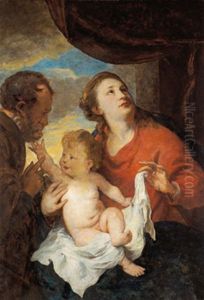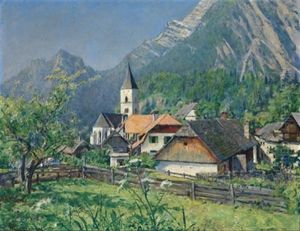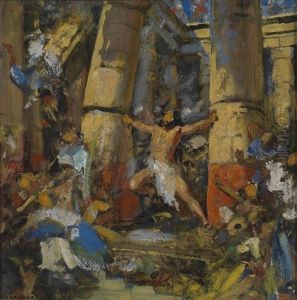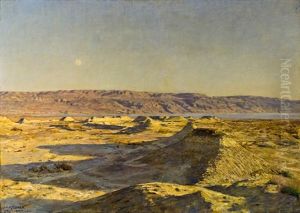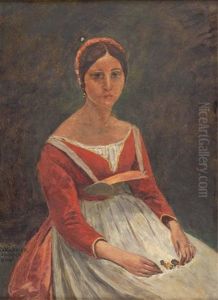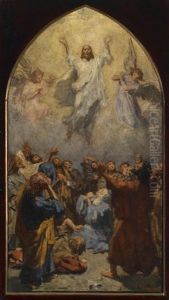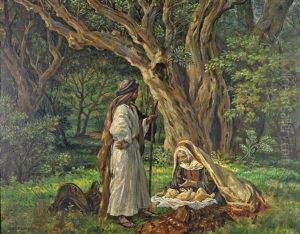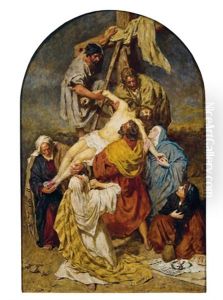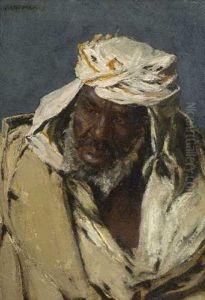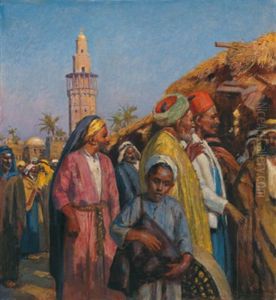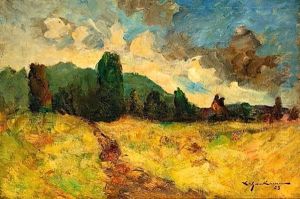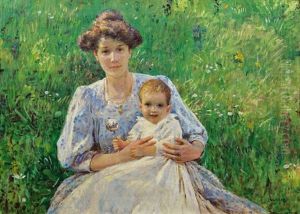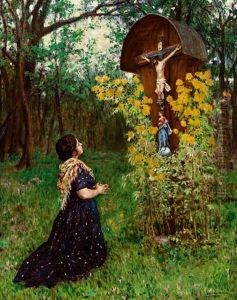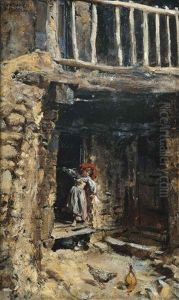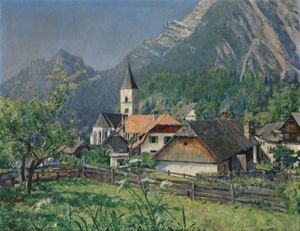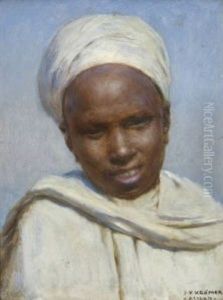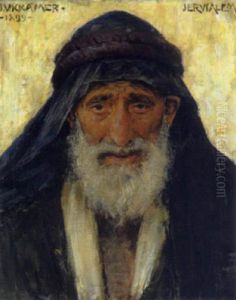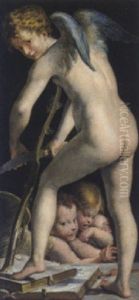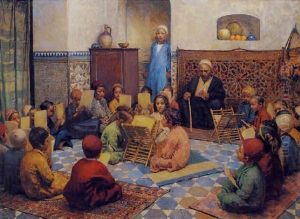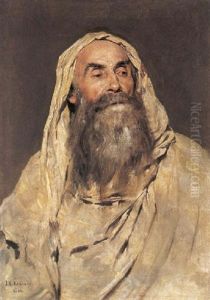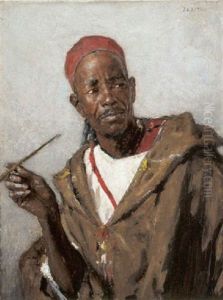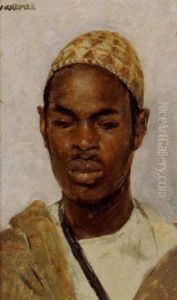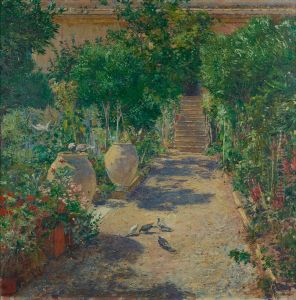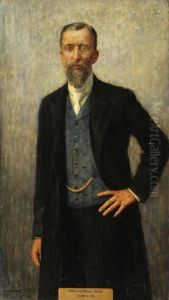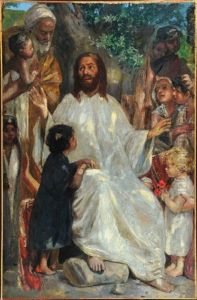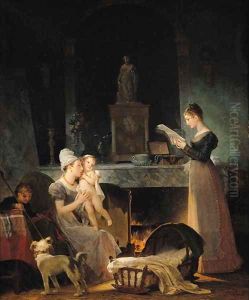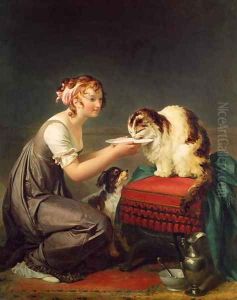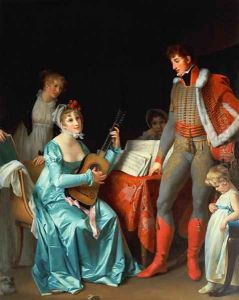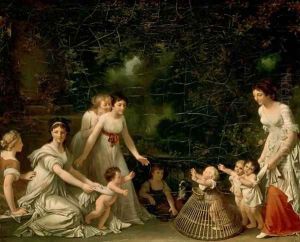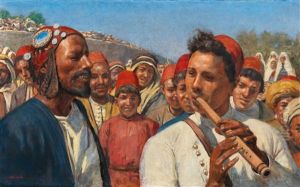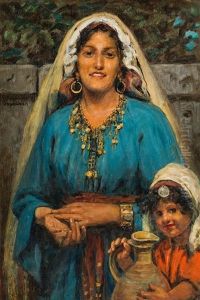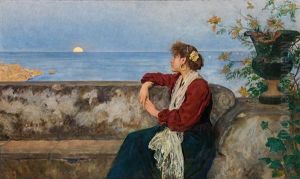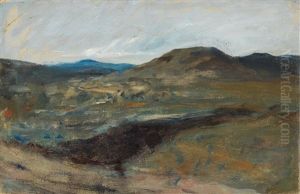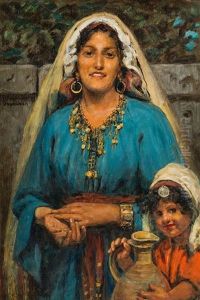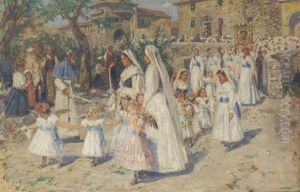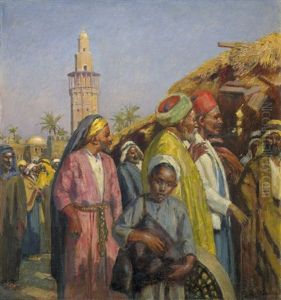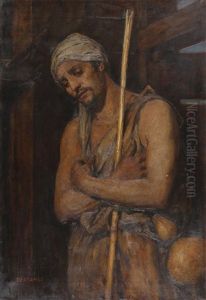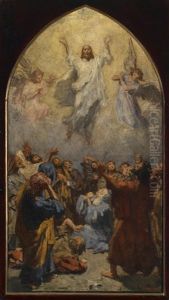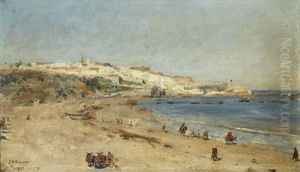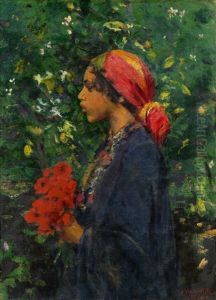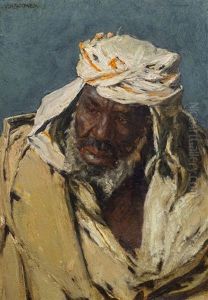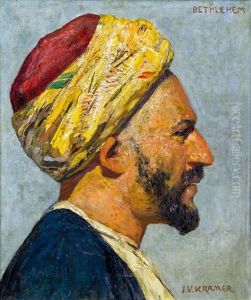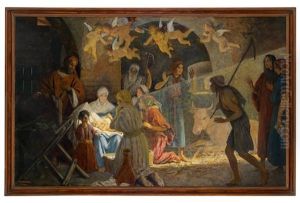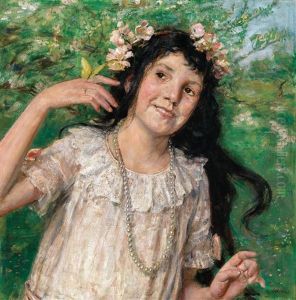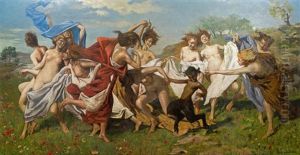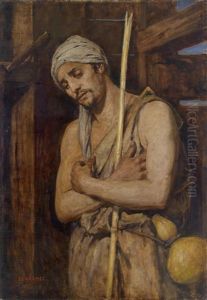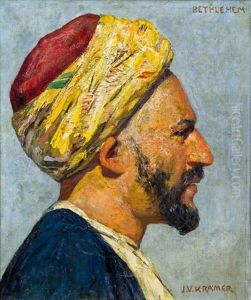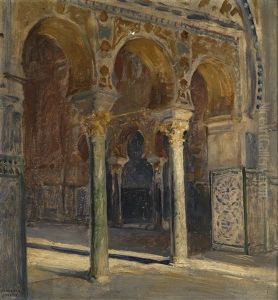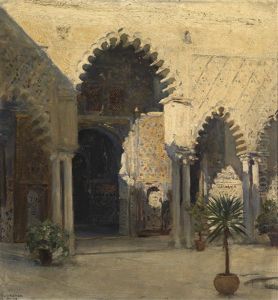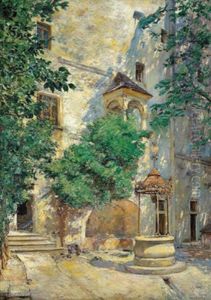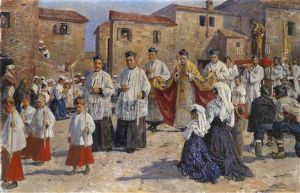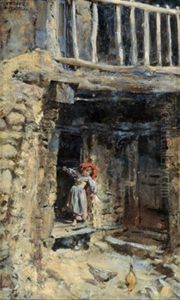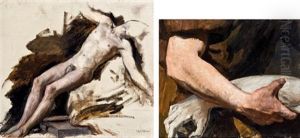Johann Victor Kramer Paintings
Johann Victor Kramer was an Austrian painter born on February 20, 1861 in Neusiedl am See, Austria. He was part of the Austrian Symbolist movement and was closely associated with the Vienna Secession, which was a group of artists that broke away from the traditional academic art establishment in the late 19th century.
Kramer received his education at the Academy of Fine Arts Vienna, where he studied under Christian Griepenkerl, a professor known for his historical paintings. Kramer's early work was heavily influenced by the academic style, but he gradually developed an interest in Symbolism and Art Nouveau, which were gaining popularity across Europe.
In 1897, Kramer joined the Vienna Secession, which was founded by artists like Gustav Klimt, Koloman Moser, and Josef Hoffmann. This movement sought to create a new, modern art, free from the constraints of academic traditions. Kramer contributed to the group's exhibitions and was involved in the development of a distinct Viennese modernist style.
Throughout his career, Kramer's work displayed a fascination with the mystical and the ethereal. He often explored themes of mythology, allegory, and spirituality. His paintings were characterized by their decorative quality and use of sinuous lines and were often imbued with a sense of melancholy and introspection.
During the early 20th century, Kramer's style evolved, showing influences from Impressionism and Expressionism. He exhibited his work both within Austria and internationally, gaining recognition for his unique contributions to modern art.
Johann Victor Kramer's artistic output declined after World War I, as the war and its aftermath had a profound impact on the cultural landscape of Europe. He continued to paint, but his later works did not achieve the same level of acclaim as his earlier pieces. Kramer passed away on November 2, 1949, in Vienna. His legacy is preserved in the art history of Austria and the broader narrative of the Symbolist and Secessionist movements, with his works housed in various museums and private collections around the world.
